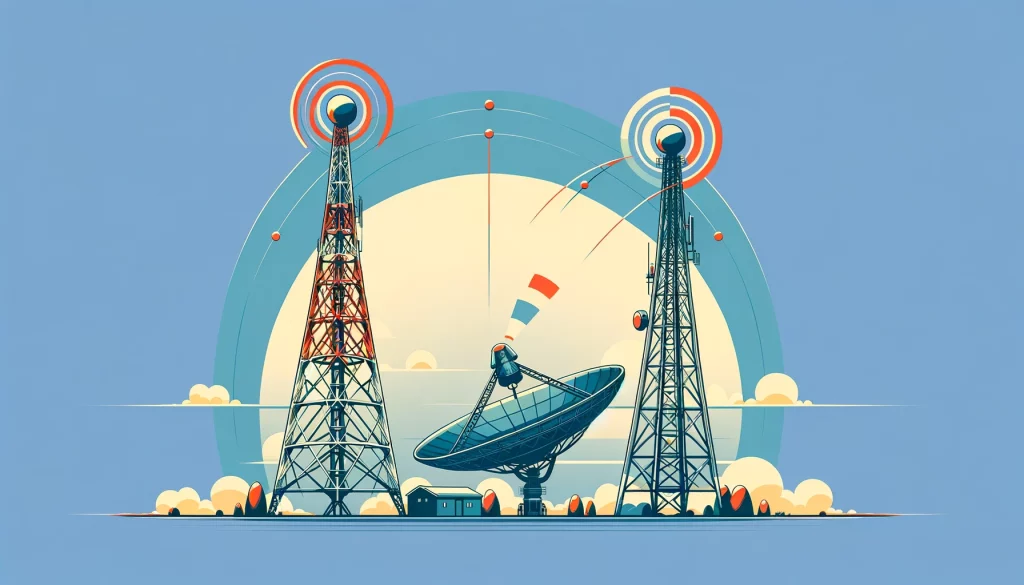
A Legacy of Accessibility
Broadcast television, often referred to as Over-the-air (OTA) TV, has been a cornerstone of entertainment for decades, offering a window to the world without requiring a subscription. This article delves into the world of broadcast TV, exploring its history, technology, content, and future in the ever-evolving media landscape.
Unveiling the Basics: No Strings Attached
The essence of broadcast TV lies in its unrestricted accessibility. Unlike its subscription-based counterparts, such as cable or satellite TV, Over-the-air broadcast channels are broadcasted unencoded, allowing anyone with a compatible receiver and antenna to capture the signal and enjoy the content free of charge. This makes broadcast TV a particularly attractive option for individuals and families seeking to avoid the recurring costs of paid television services.
A Journey Through Time: From Radio Waves to Digital Horizons

The story of Broadcast TV begins with terrestrial television, also known as over-the-air (OTA) TV. This technology utilizes radio waves transmitted from terrestrial towers (hence “terrestrial”) to reach viewers’ homes. The early days saw the use of VHF (Very High Frequency) and UHF (Ultra High Frequency) bands, with iconic “rabbit ears” antennas serving as the primary means of reception.
The development of digital broadcasting in the late 20th century revolutionized OTA TV. This transition offered significant improvements in picture quality, sound clarity, and channel capacity, paving the way for a more immersive viewing experience. Additionally, digital signals are less susceptible to interference compared to their analog counterparts, resulting in a more reliable reception.
However, digital broadcasting presented a unique challenge: the need for compatible receivers. To address this, many governments implemented converter box programs, allowing viewers with older analog equipment to continue accessing broadcast channels during the transition period.
Beyond the Antenna: Embracing New Frontiers

While terrestrial TV remains the foundation of broadcast TV, technological advancements have introduced new avenues for delivering content. Some broadcasters utilize satellite platforms, reaching viewers through dedicated satellites without requiring a cable subscription. Additionally, the rise of the internet has led to the emergence of internet protocol television (IPTV), where broadcast channels are streamed through the internet instead of traditional broadcast methods. These innovative delivery methods offer advantages like improved signal strength in geographically challenging areas and the potential for interactive features. However, they can also be subject to internet connection limitations, such as bandwidth restrictions and data caps.
Content Spectrum: A Diverse Offering
Broadcast channels cater to a wide range of interests, providing a diverse programming menu. News, sports, entertainment, educational programs, and children’s shows are just some of the content categories typically available. Notably, broadcast channels often play a crucial role in broadcasting local news and events, fostering a sense of community and keeping viewers informed about their surroundings. While the specific programming mix varies depending on the region, broadcast channels generally focus on broadcasting content with wider appeal, aiming to reach a large audience. This often translates into a stronger emphasis on general entertainment, such as sitcoms, reality shows, and talk shows, alongside news programming and locally produced content.
The Future Unfolds: Challenges and Opportunities
Broadcast TV faces both challenges and opportunities in the constantly evolving media landscape. The rise of streaming services with their vast libraries of on-demand content poses a significant challenge, potentially attracting viewers who might have previously chosen broadcast channels. Moreover, the fragmentation of the television market across various platforms can make it difficult for viewers to discover broadcast offerings.
However, broadcast TV also boasts several advantages. Its accessibility remains a major strength, particularly in regions with limited internet access or where subscription costs are prohibitive. Additionally, broadcast channels often play a vital role in broadcasting public service announcements and emergency information, ensuring critical information reaches a wider audience during times of crisis. Looking ahead, collaboration and innovation will be key for the continued success of broadcast TV. Partnerships with streaming platforms could offer wider access and discoverability. Investing in high-quality content production and embracing new technologies like interactive features can further enhance the viewing experience.
Measuring the Impact: The Role of Quality Analytics
As broadcasted television navigates the changing media landscape, understanding its effectiveness becomes crucial. Companies like Quality Analytics, a leader in offline TV attribution, offer solutions to measure the true impact of broadcast television campaigns. Through their advanced technology, Quality Analytics helps broadcasters:
- Measure campaign effectiveness: Track the performance of broadcast television campaigns across various channels and platforms.
- Optimize ad spending: Gain insights into which broadcast television channels and programs deliver the best return on investment (ROI).
- Understand audience engagement: Learn how viewers interact with offline television content, allowing for targeted advertising strategies.
By leveraging Quality Analytics’ expertise, broadcasters can unlock the full potential of broadcast television in the digital age, reaching engaged audiences and demonstrating the value proposition of over-the-air television. Schedule a Demo with Quality Analytics today.
Conclusion: A Legacy Enduring
Over-the-air TV broadcasting, a long-standing source of entertainment and news, remains free and readily available. Broadcast television faces a constantly evolving media landscape. To retain its relevance and value for viewers, it must adapt by leveraging its existing strengths while embracing innovative approaches. OVA TV promises to continue bringing diverse content. They aim to foster a sense of community into homes around the world.







